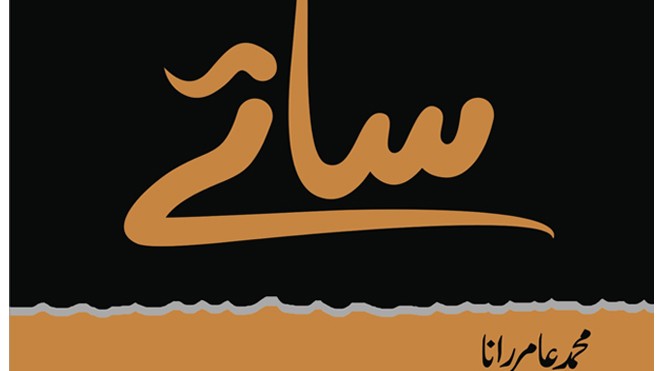
Many of the novel’s characters have let love get the better of them

Muhammad Amir Rana is a renowned security and political analyst, but very few know he began as a journalist and fiction writer. His first fiction work, a collection of short stories, Adhoori mohabateen aur puri kahaniyaan (Incomplete Love and Complete Stories) was published in 2002. Readers were attracted to his simple yet punctilious style. One story in the collection, Bano ke zakhm haray hain (Bano’s wounds are still fresh), portraying the tragic life of a feminine character, can be described as the best of that collection.
Saaye (Shadows), published a few months ago, is Rana’s first novel. The publication of Saaye confirms that Rana has kept his inner creativity alive and didn’t let his numerous engagements get the better of him.
However, it seems that most of the characters in the novel have let their hearts get the better of them. They all appear as reflections of their real selves because social pressures and love have wiped out these people, their importance has been reduced to mere shadows of their former selves.
The writer has divided the novel into 28 parts, each chapter is intense and stays true to its own situation and experience.
The novel starts in a dramatic fashion: A few people are standing for a long time with their hands raised up, in front of a wall. The central character is one of them. They all share the common fear of being shot at from the back. After some time passes and nothing happens, they drop their hands and look around to realise that they know each other. They are happy that they are safe, but remain suspicious of each other as anyone could be the shooter.
The actual story starts from the second chapter of the novel when the narrator gets lost in his hometown. He has changed so much that his closest friends cannot identify him even though he can recognise them. He swings between the experience of existence and non-existence all the while telling his own story as well as the story about how Lahore city became a victim of aloofness and barbarism.
The novel’s characters reside around Mall Road and have rejected their previous materialistic life. The central character is suffering from cancer and doctors think he will not survive past a few months.
Rana juxtaposes this cancer with the ‘dictator’ and this is vividly seen when a friend of the central character (Amjad) says: "The influence of this dictatorship will come 20 years after it dies, when a paralysed, subservient, and timid generation will be born."
Amjad’s character is the opposite of the narrators, both have contradicting habits and priorities. Despite this, their friendship is strong. This seemingly strong friendship is dented by Afia, over whom the narrator and Amjad fight. The narrator wins Afia, but life takes such a turn that he eventually has to leave her as well as his settled life.
To escape suffering the cancer will cause him, he abandons his existence and lives like a vagabond in his own city, on Mall Road. He looks at Lahore from a different perspective, one which has distanced itself from material interests and the amenities of life; this life has no space for materialistic people.
In this parallel world of vagabonds, the narrator meets and mingles with many different characters. They are all bitten by love. Their failure at achieving love has made them leave behind reality. But that does not mean that the version of life they have adopted is free of tensions and complexities. Naseer is one such vagabond character who hand writes posters in support of animals and birds. The protesting paragraphs of his posters seem to be product of a demented mind in a city that is grieving economic, social, cultural and religious imbalances.
At one point the narrator is perturbed at being recognised despite being dressed so shabbily. He admits he is an educated man who adopted this life to escape pain and suffering.
He realises he left his home more than a year ago, despite doctors telling him that he will not survive for more than a few months. In a sense, he has defeated his suffering and temporarily even his death.
Another vagabond character is a palmist who lives on the Mall Road, he tells people’s fates by reading their hands. For a few months, he has been observing that people’s life lines are getting eroded. He is increasingly coming across more and more eroded lines. It is as of a collective death hangs over the city. Even his own life line is eroding, as is the narrator’s.
Another recurring and beautifully handled motif of the novel is that of dreams. Sometimes, these reflect difficulties that humans face, other times the dreams warn humans about coming events.
Losing memory or drifting into oblivion is another of the novel’s motifs. It is a tool Rana uses to free the characters from their past life and also from the dissatisfaction of their present life.
Saaye not only describe the lives of those who have rejected their material lives, it also presents and explores complex relationships between these characters. Rana treats the social context and their relationships with a simplicity and beauty that become the novel’s greatest strengths. At times, one thinks that the conversations in the novel should have been longer; other than that, it is a great novel and one hopes it is widely read.